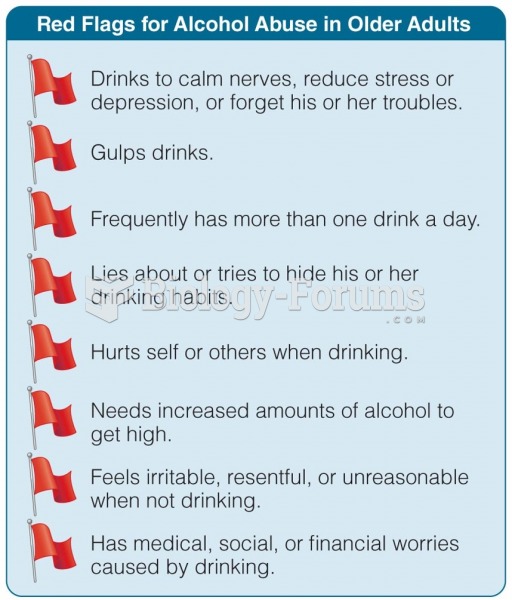Answer to Question 1
D, C, B, A
The nurse begins planning for home injury prevention by assessing the older adult for risk factors for alcohol abuse and for contributors to alcohol abuse or falls. Assessment data help identify areas for intervention; falling and incontinence, especially in women, are risk factors for alcohol abuse. Second, the nurse helps this woman improve incontinence by teaching her strategies to use to improve bladder control. Alcohol abuse increases the risk of incontinence by relaxing the bladder's muscle tone and by increasing an older adult's instability or mobility impairment; therefore the nurse includes plans to control alcohol intake. Next, before discharge, the woman's home is inspected for potential safety hazards to prevent future falls and injury and to remove a safety hazard as a contributor to falls. Finally, an alcohol prevention program can be a suitable intervention for this older adult if alcohol abuse is a contributing factor. Depending on the as-sessment data, the willingness to avoid alcohol can determine whether she has the capacity to live at home or should be in a residential facility to maintain safety.
Answer to Question 2
A
Feedback
A Correct. Hospitalization often disrupts normal sleeping patterns, so reestablishing those patterns is the best first step to improving the quality of sleep in the hospital.
B Incorrect. This is a reasonable approach to complaints of sleeplessness, but it may not be this woman's problem.
C Incorrect. Sleep is increasingly fragmented in older adults; however, under-standing that issue may or may not help this woman sleep for longer periods.
D Incorrect. A book or movie can help some people become drowsy, but that will not usually increase the quality or duration of their sleep. In fact, books and movies can be stimulating and decrease the ability to fall asleep.







